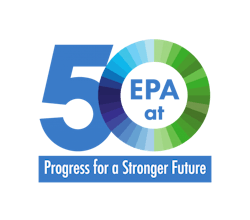EPA Announces Additional Steps to Reduce Lead in Drinking Water
PRESS RELEASE
The U.S. Environmental Protection Agency announced a final rule July 29 to reduce lead in plumbing materials used in public water systems, homes, schools and other facilities. This action marks a milestone in implementing the Trump administration’s Federal Action Plan to Reduce Childhood Lead Exposures and Associated Health Impacts.
“The Trump administration is committed to providing clean and safe drinking water for all Americans,” said EPA Administrator Andrew Wheeler. “The lead-free rule is a critical step in EPA’s efforts to substantially improve children’s health and further the agency’s action plan goal of reducing children’s exposure to lead sources.”
The lead-free final rule significantly limits the lead content allowed in plumbing materials (e.g., pipe, fittings and fixtures) used in new construction and replacement of existing plumbing. Specifically, the new rule reduces the percentage of lead content allowed in these materials from 8 percent to 0.25 percent in accordance with the Reduction of Lead in Drinking Water Act.
The final rule also requires that manufacturers or importers certify that their products meet the requirements using a consistent verification process. As a result, this new rule will reduce lead in drinking water and assure that states, manufacturers, inspectors and consumers have a common understanding of “lead-free” plumbing.
The EPA also announced that it has sent the final Lead and Copper Rule (LCR) to the Office of Management and Budget. This will be the first major update to the LCR in nearly three decades. On Oct. 10, 2019, the EPA proposed a proactive and holistic approach to improving the current LCR — from testing to treatment to replacing lead service lines to telling the public about the levels and risks of lead in drinking water. These improvements would further reduce lead in drinking water and help assure that water is less corrosive to older, lead-containing plumbing materials.
The lead-free final rule will become effective 30 days after publication in the Federal Register and the certification requirement must be implemented within three years.
To learn more about the final “Use of Lead-Free Pipes, Fittings, Fixtures, Solder, and Flux for Drinking Water” rule, visit www.epa.gov/sdwa/use-lead-free-pipes-fittings-fixtures-solder-and-flux-drinking-water.
Background
In December 2018, the EPA with its federal partners announced the Federal Action Plan to Reduce Childhood Lead Exposures and Associated Health Impacts. Through the action plan, the EPA is working to reduce lead exposures from multiple sources including: paint, ambient air, drinking water, and soil and dust contamination. Some highlights include:
June 17, 2020: EPA released a proposal to lower the clearance levels for dust on floors and windowsills after lead removal activities from 40 micrograms of lead in dust per square foot to 10 µg/ft2 for floor dust and from 250 µg/ft2 to 100 µg/ft2 for windowsill dust.
Oct. 2019: EPA’s proposed Lead and Copper Rule included a suite of actions to reduce lead exposure in drinking water where it is needed the most.
Oct. 2019: EPA signed a new Memorandum of Understanding that provides a framework for a coordinated approach between more than a dozen critical partners across the federal government, tribes, water utilities and the public health community.
Oct. 2019: EPA announced 117 federal enforcement actions completed over the last year to ensure entities like renovation contractors, landlords and property managers are in compliance with regulations that require them to protect communities and the public from exposures to lead.
April 2019: EPA announced the initial availability of grant funding to assist states, tribes and territories with improving drinking water. States, tribes and territories are eligible to receive funding from EPA drinking water grant programs established by the Water Infrastructure Improvements for the Nation Act (WIIN):
Under EPA’s Voluntary Lead Testing in Schools and Child Care grant program, EPA awarded $43.7 million in grants in 2018-2019 and will be awarding $26 million in new funding in 2020 to fund testing for lead in drinking water at schools and child care programs. Testing results carried out using grant funds must be made publicly available.
Under EPA’s Assistance for Small and Disadvantaged Communities grant program, EPA awarded $42.8 million in grants to support underserved communities with bringing public drinking water systems into compliance with the Safe Drinking Water Act. Funding can also be used for conducting household water quality testing, including testing for unregulated contaminants.
EPA’s Reduction in Lead Exposure [through Infrastructure Improvements in Drinking Water Systems and in Schools and Child Care Facilities] grant program, makes available $39.9 million to assist disadvantaged communities with removing sources of lead in drinking water from drinking water systems and schools.
Dec. 2018: EPA Administrator Andrew Wheeler, HUD Secretary Ben Carson, and U.S. Health and Human Services Deputy Secretary Eric Hargan unveiled the Trump administration’s Federal Action Plan to Reduce Childhood Lead Exposures and Associated Health Impacts (Lead Action Plan).
Developed through cross-governmental collaboration of the President’s Task Force on Environmental Health Risks and Safety Risks to Children, which includes 17 federal departments and offices, the lead action plan is a blueprint for reducing lead exposure and associated harms by working with a range of stakeholders, including states, tribes and local communities, along with businesses, property owners and parents.
Contact the EPA to ask a question, provide feedback or report a problem.
